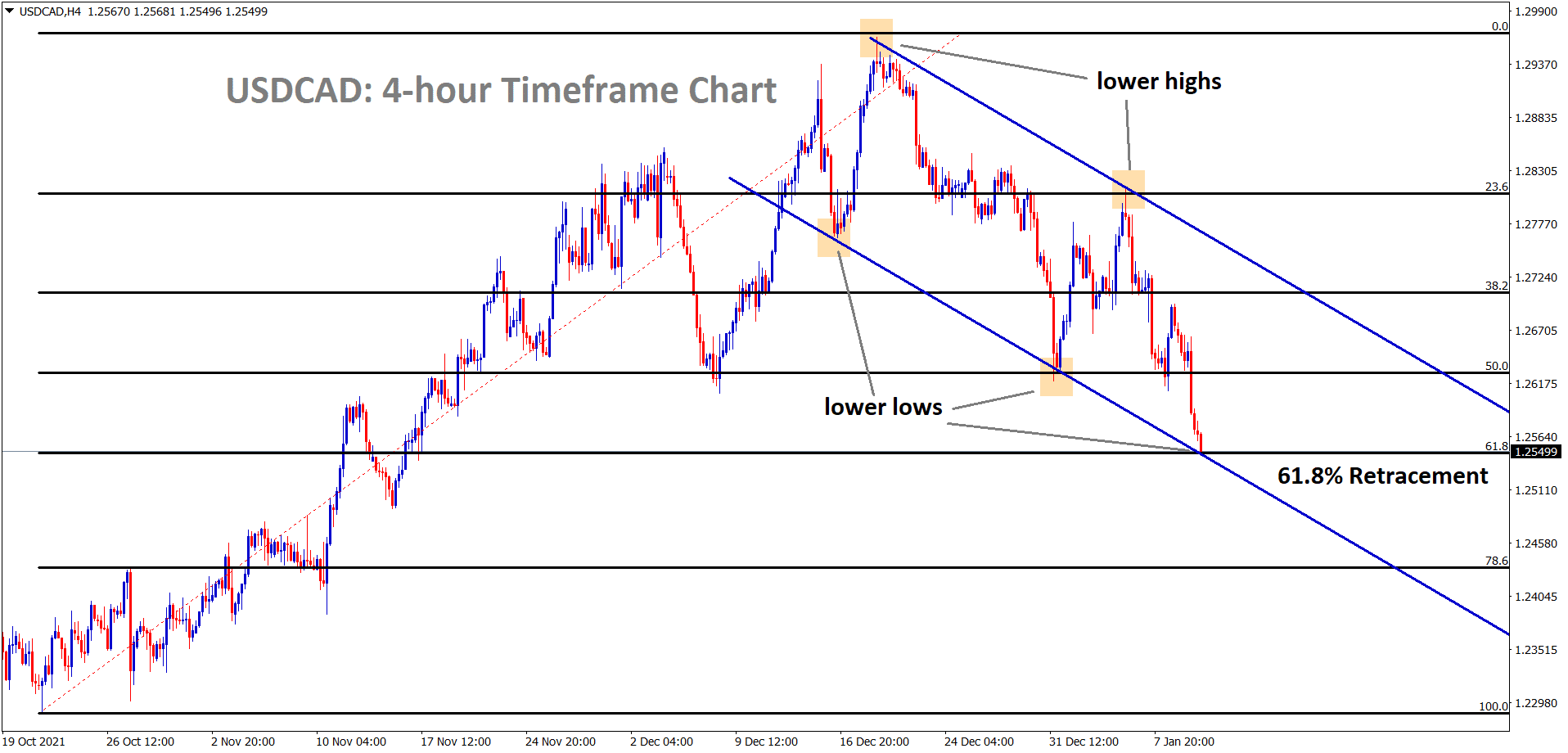Forex trading is a complex and dynamic financial market, where currency values are influenced by a multitude of factors. Among these factors, news events and economic data releases play a significant role in driving price movements. Mastering Forex news trading involves understanding how to analyze, interpret, and react to these events strategically. In this comprehensive guide, we will explore various aspects of news trading in Forex, including strategies, techniques, risk management, and essential tips.
I. Introduction to Forex News Trading

1. What is Forex?
Forex, short for “foreign exchange,” is the global financial market where currencies are traded. It is a decentralized market, meaning there is no single physical location for trading; instead, it operates electronically through a network of banks, financial institutions, corporations, governments, and individual traders. The primary purpose of the Forex market is to facilitate currency conversion for businesses, governments, travelers, and investors.
Key Points:
- Forex is the largest and most liquid financial market in the world.
- It operates 24 hours a day, five days a week, allowing for continuous trading across different time zones.
- Forex trading involves the exchange of one currency for another, with the aim of profiting from changes in exchange rates.
2. The Importance of News in Forex Trading

In the context of Forex trading, news refers to various economic, political, and geopolitical events, as well as economic data releases. These events can have a significant impact on currency prices. Understanding the importance of news in Forex trading is crucial for traders to make informed decisions.
Key Points:
- News events can cause rapid and substantial price movements in the Forex market.
- Factors such as economic indicators, central bank decisions, political developments, and geopolitical tensions all influence currency values.
- Forex traders must stay informed about news events and learn how to react strategically to capitalize on opportunities and manage risks.
3. Objectives of Forex News Trading
Forex news trading serves several essential objectives for traders:
Profit Generation: One of the primary goals of news trading is to profit from short-term price movements triggered by news releases. By correctly anticipating market reactions, traders can enter and exit positions to capture gains.
Risk Management: Effective news trading involves implementing risk management strategies to protect capital. This includes setting stop-loss orders, sizing positions appropriately, and managing leverage.
Market Understanding: News traders aim to develop a deep understanding of how news events impact the Forex market. This knowledge helps them make well-informed trading decisions and react swiftly to changing market conditions.
Key Points:
- News trading aims to profit from price volatility generated by news events.
- Risk management is essential to protect capital during news-driven market fluctuations.
- A comprehensive understanding of how news impacts currency markets is a cornerstone of successful news trading.
This section sets the stage for the rest of the guide, providing readers with a foundational understanding of what Forex is, why news is vital in this market, and the objectives that news traders strive to achieve. It emphasizes the dynamic nature of the Forex market and the need for traders to stay informed and adaptable.
II. Preparing for News Trading
1. Establishing a Trading Plan
Before diving into news trading, it is essential to establish a well-structured trading plan. This plan serves as a roadmap for your trading activities and helps you stay disciplined and focused on your objectives.
Key Points:
Goals and Objectives: Define your trading goals, such as profit targets, risk tolerance, and preferred trading style (e.g., day trading, swing trading, or position trading).
Strategies: Outline the trading strategies you plan to use, including those specific to news trading.
Risk Management: Define how you will manage risk, including position sizing, stop-loss orders, and take-profit levels.
Trading Schedule: Decide when and how often you will trade, considering time zones and market hours.
Monitoring and Evaluation: Establish procedures for monitoring your trading performance and evaluating your strategies.
2. Fundamental Analysis vs. Technical Analysis
Fundamental analysis and technical analysis are two primary methods for analyzing financial markets, including the Forex market.
Fundamental Analysis: This approach involves examining economic, political, and geopolitical factors that can influence currency values. Traders using fundamental analysis focus on news events, economic indicators, central bank decisions, and global economic trends.
Technical Analysis: Technical analysis relies on historical price data, chart patterns, and technical indicators to make trading decisions. Traders using technical analysis look for patterns and trends in price charts.
Key Points:
- News trading primarily relies on fundamental analysis, as news events are driven by external factors.
- Successful traders often incorporate both fundamental and technical analysis into their strategies to gain a more comprehensive view of the market.
3. Economic Calendar and Event Selection
Economic calendars are essential tools for news traders. These calendars provide a schedule of upcoming economic data releases and significant events that can impact the Forex market.
Key Points:
Economic Calendar: Familiarize yourself with economic calendars, which list events by date, time, and importance (high, medium, or low impact).
Event Selection: Carefully select the news events you plan to trade based on their potential impact on currency pairs and your expertise in those markets.
4. Risk Management and Capital Allocation
Risk management is a critical component of successful news trading. It involves strategies and techniques to protect your capital from significant losses.
Key Points:
Position Sizing: Determine the appropriate position size for each trade based on your risk tolerance and the size of your trading account.
Leverage: Understand how leverage works and use it judiciously, avoiding excessive leverage that can lead to substantial losses.
Stop-Loss Orders: Always use stop-loss orders to limit potential losses on each trade.
Take-Profit Orders: Implement take-profit orders to secure profits at predefined levels.
Diversification: Avoid overconcentration in a single currency pair or asset, and spread your risk across multiple trades.
Emotional Control: Maintain discipline and avoid emotional decision-making, such as revenge trading or impulsive actions.
This section provides essential groundwork for news trading. It emphasizes the importance of careful planning, risk management, and the use of fundamental and technical analysis in developing effective trading strategies. News traders must prepare themselves mentally and strategically to navigate the Forex market successfully.
III. Forex News Trading Strategies
1. The Breakout Strategy
Definition
The breakout strategy is a popular approach in Forex news trading. It involves entering a trade when the price breaks out of a predefined price range or consolidating pattern. In the context of news trading, this strategy is employed when a significant news event triggers a sharp price movement, breaking through key support or resistance levels.
How to Identify Breakout Opportunities
Identify Key Levels: First, identify key support and resistance levels on the price charts. These levels are where price has historically reversed or consolidated.
Monitor Economic Calendar: Keep an eye on the economic calendar for high-impact news events that can potentially lead to breakouts.
Anticipate Price Movements: Anticipate potential price movements based on the expected impact of the news event. Consider the direction in which the breakout might occur.
Entry and Exit Points
Enter the Trade: Enter the trade when the breakout occurs, confirming the new trend direction. Confirmation can come from candlestick patterns, technical indicators, or other methods.
Set Stop-Loss Orders: Set stop-loss orders to limit potential losses if the breakout fails to sustain itself.
Take-Profit Orders or Trailing Stops: Use take-profit orders at key support or resistance levels, or employ trailing stops to secure profits as the trend develops.
2. The Retracement Strategy
Definition
The retracement strategy involves trading against the initial price movement following a news release. Traders using this strategy anticipate that the market will retrace or reverse the initial movement after an exaggerated move caused by the news.
How to Identify Retracement Opportunities
Wait for Price Spike: After a significant news event, wait for a substantial price spike in one direction.
Use Technical Analysis: Employ technical analysis tools like Fibonacci retracement levels to identify potential reversal points.
Watch for Exhaustion: Look for signs of exhaustion or overextension in the initial move, such as overbought or oversold conditions.
Entry and Exit Points
Enter the Trade: Enter the trade when the retracement begins, ideally with confirmation signals such as candlestick patterns or technical indicators.
Set Stop-Loss Orders: Set stop-loss orders to limit potential losses if the retracement doesn’t occur as expected.
Set Take-Profit Levels: Identify take-profit levels at key support or resistance areas or use technical indicators to determine exit points.
3. The Scalping Strategy
Definition
Scalping in news trading involves making quick, short-term trades to capitalize on rapid price fluctuations caused by news releases. Scalpers aim to profit from small, incremental price movements.
Scalping Techniques for News Trading
Short Timeframes: Use very short timeframes, such as 1-minute or 5-minute charts, to identify entry and exit points.
Monitor Multiple Pairs: Simultaneously monitor multiple currency pairs for news-driven opportunities.
Swift Execution: Execute trades swiftly, often within seconds or minutes of the news release.
Technical Indicators: Rely on technical indicators like moving averages or stochastic oscillators for entry and exit signals.
Risk Management in Scalping
Tight Stop-Loss Orders: Set tight stop-loss orders to minimize losses in case of adverse price movements.
Position Sizing: Limit the size of each trade to a small percentage of your trading capital.
Discipline: Scalping can be mentally demanding, so maintain discipline and avoid overtrading.
4. The Trend Following Strategy
Definition
The trend-following strategy involves trading in the direction of a prevailing trend following a news event. Traders identify and join the trend initiated by the news release and ride it for potential extended gains.
Identifying Trends in News-Driven Markets
Technical Indicators: Use technical indicators like moving averages, MACD, or trendlines to identify existing trends.
Price Movement: Pay attention to the direction of price movement after the news release.
Confirmation: Confirm trend signals using multiple technical tools for added confidence.
Entry and Exit Strategies
Enter the Trade: Enter the trade in the direction of the trend once it is confirmed by technical analysis.
Stop-Loss Orders: Set stop-loss orders to protect against adverse price reversals.
Take-Profit Orders: Use take-profit orders at key support or resistance levels or based on technical indicators.
These four Forex news trading strategies provide traders with different approaches to capitalize on news-driven market movements. Depending on their trading style, risk tolerance, and market conditions, traders can choose the strategy that best suits their preferences and objectives. It’s important to note that each strategy has its advantages and risks, and traders should practice and adapt their approach over time.
IV. Interpreting Economic Data
1. Key Economic Indicators
Gross Domestic Product (GDP)
Definition: GDP measures the total economic output of a country. It reflects the market value of all goods and services produced within a country’s borders within a specific time frame.
Impact on Forex: A rising GDP indicates economic growth, which can strengthen the country’s currency. Conversely, a declining GDP may weaken the currency.
Employment Data
Non-Farm Payrolls (NFP) and Unemployment Rates: These are key employment indicators.
Impact on Forex: Positive NFP data and declining unemployment rates are generally bullish for a country’s currency. Conversely, negative NFP data and rising unemployment rates can be bearish.
Consumer Price Index (CPI)
Definition: CPI measures inflation levels by tracking the average change over time in the prices paid by urban consumers for a market basket of consumer goods and services.
Impact on Forex: A rising CPI suggests inflation, which can lead to higher interest rates and currency appreciation. Conversely, falling CPI may indicate deflation and currency depreciation.
Central Bank Interest Rates
Impact on Forex: Central banks use interest rates to control inflation and economic growth. Higher interest rates can attract foreign capital, strengthening the currency, while lower interest rates can deter capital flows, leading to currency depreciation.
2. Analyzing Economic Data Releases
Impact Assessment
Economic Events Categories: Economic events are categorized as high, medium, or low impact based on their potential to move the market.
High-Impact Events: These events can trigger significant market volatility and are closely watched by traders.
Historical Data vs. Expectations
Comparing Actual Data: Traders compare the actual data release with market expectations.
Positive Surprise: If the actual data is better than expected, it can lead to currency strength.
Negative Surprise: If the actual data is worse than expected, it can lead to currency weakness.
Market Sentiment and Reaction
Gauging Market Sentiment: Traders should gauge market sentiment before and after the news release. Market sentiment can be bullish or bearish, influencing currency prices.
Initial Reaction vs. Subsequent Movements: News releases can cause sharp initial market reactions, followed by periods of consolidation or trend continuation. Traders must be prepared for both scenarios.
Interpreting economic data is a critical skill for news traders. Understanding the significance of key economic indicators and their potential impact on currency markets allows traders to make informed decisions. By analyzing economic data releases, traders can anticipate market movements and position themselves accordingly, whether to enter trades, adjust existing positions, or stay on the sidelines during volatile periods.
V. Trading the News
1. The News Release Process
Pre-release Preparation
Review Your Trading Plan: Before the news release, revisit your trading plan. Ensure that your strategy aligns with the upcoming event and that your risk management parameters are in place.
Set Up Orders: Based on your analysis and trading plan, set up entry and exit orders in advance. This includes setting limit orders, stop-loss orders, and take-profit orders at appropriate levels.
Access Reliable News Sources: Ensure that you have access to reliable news sources that provide real-time information about the news event.
Trading During the Release
Maintain Discipline: Stay calm and disciplined during the news release. Emotional reactions can lead to impulsive and costly decisions.
Execute Orders: Execute your pre-planned orders without hesitation when the news is released. Be prepared for rapid price movements.
Monitor the News: Continue to monitor the news and market reactions as the release unfolds.
Post-release Analysis
Assess Market Reaction: After the news event, assess how the market has reacted. Did it move in the direction you anticipated, or were there unexpected developments?
Adjust Orders: Based on post-release analysis, consider whether you need to adjust your stop-loss or take-profit orders. Market conditions may have changed.
Decision to Hold or Exit: Depending on your trading strategy, decide whether to hold your position for further potential gains or exit to secure profits.
2. Trading the Non-Farm Payroll (NFP)
Strategy and Approach
NFP Overview: Non-Farm Payrolls (NFP) is a high-impact economic event released on the first Friday of each month. It reports the number of jobs added or lost in the U.S. outside of the farming sector.
Increased Volatility: NFP releases often lead to increased market volatility, making them attractive to traders.
Caution Required: While NFP releases can present trading opportunities, they can also be highly unpredictable, requiring caution.
Common Pitfalls to Avoid
Overleveraging: Avoid using excessive leverage when trading NFP or any high-impact event. Volatility can lead to significant losses.
Ignoring Risk Management: Stick to your risk management plan by setting stop-loss orders and managing position sizes.
Emotional Trading: NFP releases can trigger strong emotions due to rapid price movements. Maintain discipline and avoid impulsive decisions.
3. Trading Central Bank Announcements
Strategies for Trading Interest Rate Decisions
Central Bank Impact: Central bank interest rate decisions are critical market-moving events. The decision to raise or lower interest rates can have a profound impact on currency values.
Trade Direction: Consider trading in the direction of rate hikes or cuts, depending on economic conditions and central bank guidance.
Central Bank Statements: Pay close attention to central bank statements, as they often provide insights into future rate decisions and the bank’s view on the economy.
Analyzing Central Bank Statements
Communication Tone: The tone of central bank communications can influence market sentiment. Hawkish statements (indicating a potential rate hike) can strengthen a currency, while dovish statements (indicating a potential rate cut) can weaken it.
Forward Guidance: Central banks often provide forward guidance on their future policy intentions. Traders closely analyze these statements for clues about future rate moves.
4. Trading Political Events and Geopolitical Developments
Strategies for Trading Elections and Referendums
Political Events Impact: Political events, such as elections and referendums, can introduce uncertainty into currency markets.
Monitoring Polls: Before such events, monitor polls and market sentiment to gauge potential outcomes.
Caution and Adaptability: Trade these events with caution, and be prepared to adjust your positions as events unfold.
Impact of Geopolitical Tensions on Forex
Safe-Haven Flows: Geopolitical conflicts can lead to safe-haven flows, where investors seek the safety of assets like the U.S. dollar, Swiss franc, or gold.
News Monitoring: Stay vigilant and monitor news related to geopolitical developments, as these events can have sudden and unpredictable impacts on currency markets.
Trading the news requires a strategic and disciplined approach. Traders must prepare for the news release, execute their plans with precision, and adapt to changing market conditions. Different types of news events, such as economic data releases, central bank announcements, and political developments, require tailored strategies and risk management techniques. Traders should always exercise caution and prioritize risk management to navigate news-driven market volatility successfully.
VI. Risk Management in Forex News Trading
1. Position Sizing and Leverage
Calculating Lot Sizes
Risk Tolerance: Determine your risk tolerance, which is the maximum amount of capital you are willing to risk on a single trade.
Stop-Loss Level: Define your stop-loss level, which represents the amount you are willing to lose on a trade if it goes against you.
Position Size Formula: Use a position size formula that takes into account your risk tolerance and stop-loss level. A common formula is Position Size = (Risk Tolerance / Stop-Loss Distance).
Understanding Margin and Leverage
Margin: Understand how margin works. It represents the collateral required to open and maintain a leveraged position. Trading with margin allows you to control a larger position size than your account balance.
Leverage: Be aware of the leverage available to you from your broker. While leverage can amplify profits, it also magnifies losses. Use leverage judiciously to avoid excessive risk.
2. Stop-Loss and Take-Profit Orders
Setting Effective Stop-Loss Levels
Risk-Reward Ratio: Determine your desired risk-reward ratio for each trade. For example, if you’re willing to risk $100 on a trade and your stop-loss is 20 pips away, your take-profit should be set at a level that offers a reward of at least $100.
Technical Levels: Consider placing stop-loss orders just beyond key technical levels, such as support or resistance, to give your trade room to breathe without being too close to market price.
Adjust for Volatility: Be aware of market volatility and adjust your stop-loss levels accordingly. In highly volatile conditions, wider stops may be necessary to prevent premature stop-outs.
Importance of Take-Profit Orders
Securing Profits: Take-profit orders help secure profits at predefined levels. This prevents traders from becoming too greedy and allows them to lock in gains.
Technical and Fundamental Factors: Determine take-profit levels based on technical analysis, support/resistance levels, or fundamental factors influencing the trade.
3. Diversification
Currency Pair Selection
Avoid Overconcentration: Avoid overconcentration in a single currency pair. Overexposure to one pair increases risk.
Diversify: Diversify your trading portfolio by considering multiple currency pairs. This helps spread risk and can lead to more stable returns.
Avoiding Overexposure
Total Risk Exposure: Limit the total risk exposure of your trading account to a percentage of your capital. For example, some traders adhere to a rule of not risking more than 2% of their trading capital on a single trade.
Correlation Analysis: Avoid taking simultaneous positions that are highly correlated. Correlated positions can amplify risk during adverse market conditions.
4. Managing Emotions
Controlling Fear and Greed
Emotional Discipline: Emotional discipline is crucial in Forex trading. Avoid making decisions driven by fear (such as closing a winning trade prematurely) or greed (such as holding onto a losing position).
Stick to Your Plan: Stick to your trading plan and strategy, including entry and exit rules, regardless of emotional impulses.
Staying Disciplined
Execution Discipline: Maintain discipline in executing your trading plan. Avoid chasing the market or doubling down on losing positions.
Review and Learn: After each trade, review your actions and decisions. Learn from both successful and unsuccessful trades to improve your trading practices.
Effective risk management is the cornerstone of successful Forex news trading. Traders must carefully calculate position sizes, understand the implications of leverage, and use stop-loss and take-profit orders strategically. Diversifying your trading portfolio and managing emotions are equally crucial in reducing risk and enhancing overall trading performance. By prioritizing risk management, traders can navigate the challenges of news-driven market volatility with greater confidence and resilience.
VII. Advanced Techniques and Tools
1. Using Technical Analysis alongside News Trading
Incorporating Indicators and Oscillators
Combining Approaches: Many Forex traders combine technical analysis with news trading to gain a more comprehensive view of the market.
Common Indicators: Technical indicators such as Moving Averages, Relative Strength Index (RSI), and Moving Average Convergence Divergence (MACD) are commonly used alongside news analysis.
Confirmation: These indicators can be used to confirm or enhance trading decisions based on news events.
Chart Patterns in News Trading
Recognizing Chart Patterns: Traders also look for chart patterns like flags, triangles, head and shoulders formations, and more.
Pattern Analysis: By recognizing and analyzing these patterns, traders can identify potential entry and exit points that complement their news trading strategies.
2. Algorithmic News Trading
Automated Trading Systems
Definition: Algorithmic news trading involves using automated trading systems or algorithms to execute trades based on predefined criteria.
Advantages: Algorithmic trading can react quickly to news events, eliminate emotional bias, and execute trades with precision.
Backtesting: Traders often backtest their automated strategies to evaluate historical performance and optimize them for future trading.
Sentiment Analysis
Monitoring Sentiment: Traders interested in news trading also monitor social media and news sentiment related to currencies.
Commercial Tools: Commercial sentiment analysis tools are available that can provide insights into market sentiment by analyzing news articles, social media mentions, and other data sources.
Algorithmic news trading can be particularly beneficial for traders who want to automate their news trading strategies, especially in fast-paced markets where quick execution is essential. Sentiment analysis tools can provide valuable insights into market sentiment, helping traders make more informed decisions based on news sentiment.
These advanced techniques and tools complement traditional news trading strategies by providing additional layers of analysis and automation. While they can enhance trading capabilities, it’s crucial for traders to thoroughly understand and test these techniques before incorporating them into their strategies. Advanced tools and algorithms should be used with caution, especially when trading live accounts, to ensure they align with a trader’s risk tolerance and objectives.
VIII. Case Studies in Forex News Trading
1. Real-Life Examples of Successful News Trades
Exploring Successful Trades
Practical Application: In this section, you will delve into real-world case studies of news trading successes. These examples provide practical insights into how news trading strategies can be applied effectively.
Analyzing Strategies and Factors
Strategy Overview: Each case study will break down the strategy employed in the successful trade.
Factors Considered: It will also highlight the factors that were considered when making trading decisions, including the specific news event, technical analysis, and risk management.
2. Common Mistakes and Learning Points
Review of Mistakes
Identifying Errors: In addition to examining successful trades, this section will review examples of common mistakes made by news traders.
Learning from Errors: Analyzing these errors is a valuable learning opportunity for traders to avoid similar pitfalls in their own trading practices.
By examining real-life case studies of both successful news trades and common mistakes, traders can gain practical insights into the nuances of news trading. These case studies provide a bridge between theory and real-world application, helping traders refine their strategies and risk management practices. Learning from both successes and mistakes is an essential part of continuous improvement in Forex news trading.
IX. Developing a News Trading Routine
1. Continuous Learning and Improvement
Staying Updated with Market Developments
Importance of Staying Informed: Forex markets are dynamic, and news can have a significant impact. Traders must stay updated with market developments, economic events, and news sources relevant to their trading.
Continuously Educate Yourself
Commitment to Learning: Successful traders understand that learning is an ongoing process. They continuously educate themselves about new trading techniques, market dynamics, and economic factors.
Reading Resources: Traders can expand their knowledge by reading books, articles, research papers, and following expert opinions on Forex trading.
2. Keeping a Trading Journal
Maintaining a Trading Journal
Purpose of a Trading Journal: A trading journal is a tool for recording and analyzing your trading activities. It helps you track your progress, identify patterns in your trading behavior, and assess the effectiveness of your strategies.
Recording Trade Details
What to Include: In your trading journal, record details of each trade, including entry and exit points, position size, stop-loss and take-profit levels, reasons for the trade, and the outcome.
Emotional States: Note your emotional state during the trade. Were you calm, anxious, or impulsive? This information can help you manage emotions effectively.
3. Staying Updated with Market Developments
Geopolitical Events and Economic Indicators
Importance of Awareness: Stay informed about geopolitical events, economic indicators, and central bank decisions that can impact the Forex market.
Reliable Sources: Use reliable news sources and economic calendars to track upcoming events and monitor their potential effects.
Developing a news trading routine involves a commitment to continuous learning and self-improvement. Traders must stay informed about market developments, economic events, and news sources relevant to their trading strategies. Maintaining a trading journal is crucial for tracking progress and identifying areas for improvement. Staying disciplined in your routine helps you stay focused, make informed decisions, and adapt to changing market conditions effectively. This commitment to ongoing education and discipline is essential for long-term success in Forex news trading.
X. Conclusion
In conclusion, mastering Forex news trading involves a combination of comprehensive knowledge, effective strategies, and disciplined execution. Traders should be well-prepared, have a clear trading plan, and practice risk management to navigate the challenges and opportunities presented by news events in the dynamic world of Forex trading. Continuous learning, adaptability, and emotional discipline are essential for success in this exciting and potentially rewarding trading approach.
Don’t trade all the time, trade forex only at the confirmed trade setups.
Get more confirmed trade setups here: forexgdp.com/buy/















